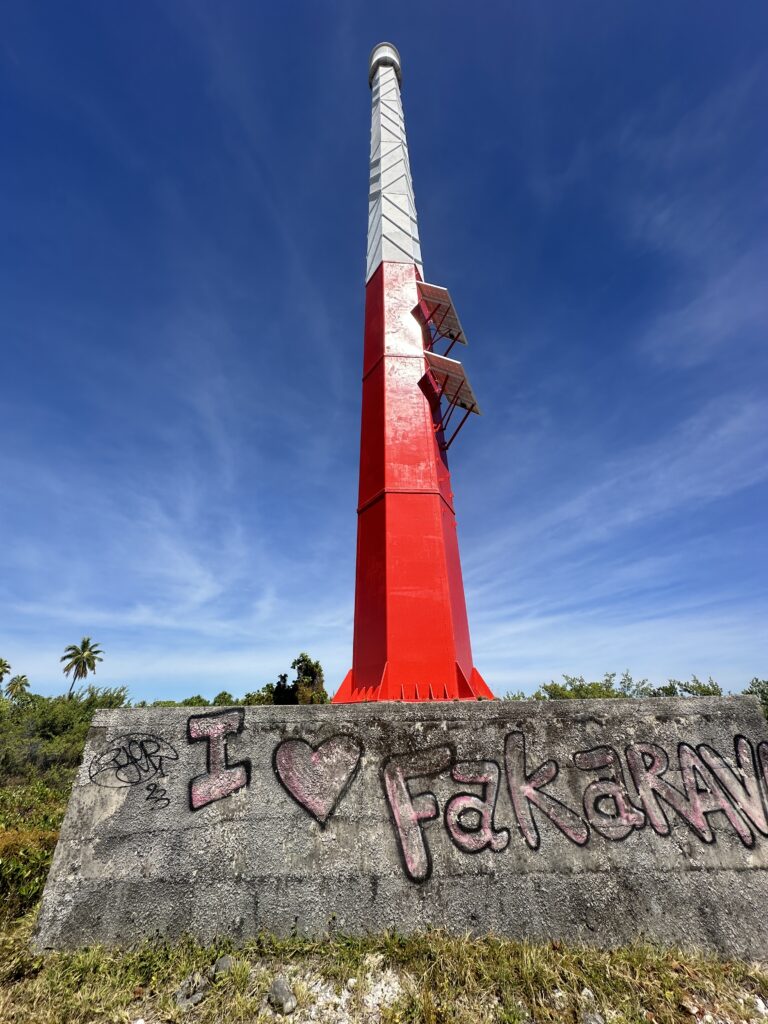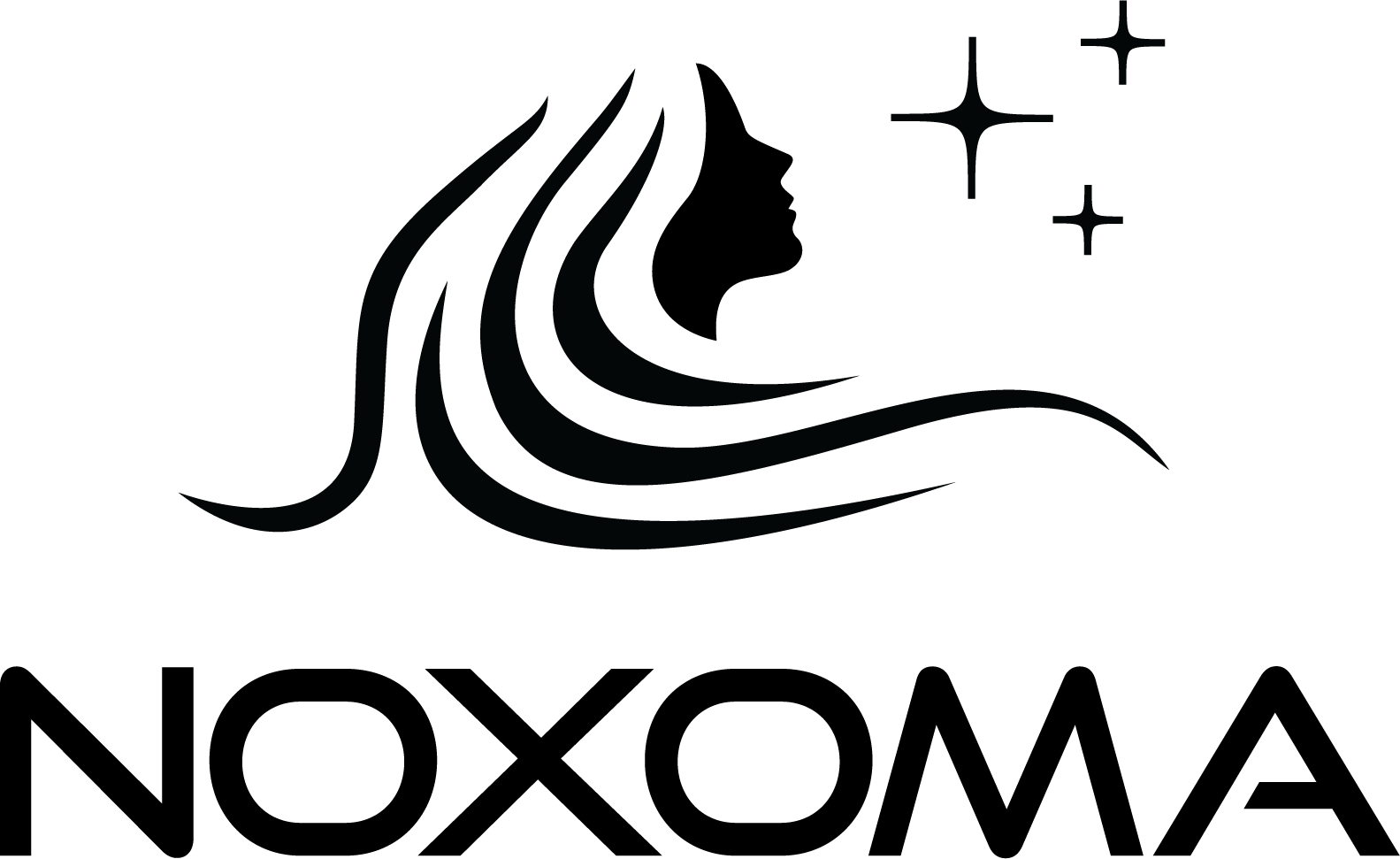After spending close to a month at the uninhabited Tahanea atoll, we were ready to go back to civilization for a while. Not only were we lacking fresh produce onboard and desperately needed to get rid of some garbage, we were also running low on beer… crisis!
We have not shopped a beer for the past seven months, so we are pretty content with the provisioning we did in Panama. We are also starting to get low on other “staple” items as well, such as milk. So, off we went to the village of Rotoava, which is the main town on the Fakarava atoll.
Fakarava is a main tourist center in the Tuamotus archipelago. It is particularly well known for the South pass, where there is a famous dive site called Wall of Sharks. Therefore, with its only 800 inhabitants, Rotoava has several hostels and restaurants as well as a total of five dive centers.
We timed our visit to when the supply ship came in, and so did everyone else, it seemed… There were 40 sailboats anchored by the village, and we all tried to time our visit to the grocery store when they put the new merchandise on the shelves. We were really lucky, and were there five minutes before. This meant we were able to get a lot of different fruits and vegetables, and were also able to secure some for our friends who were less lucky.
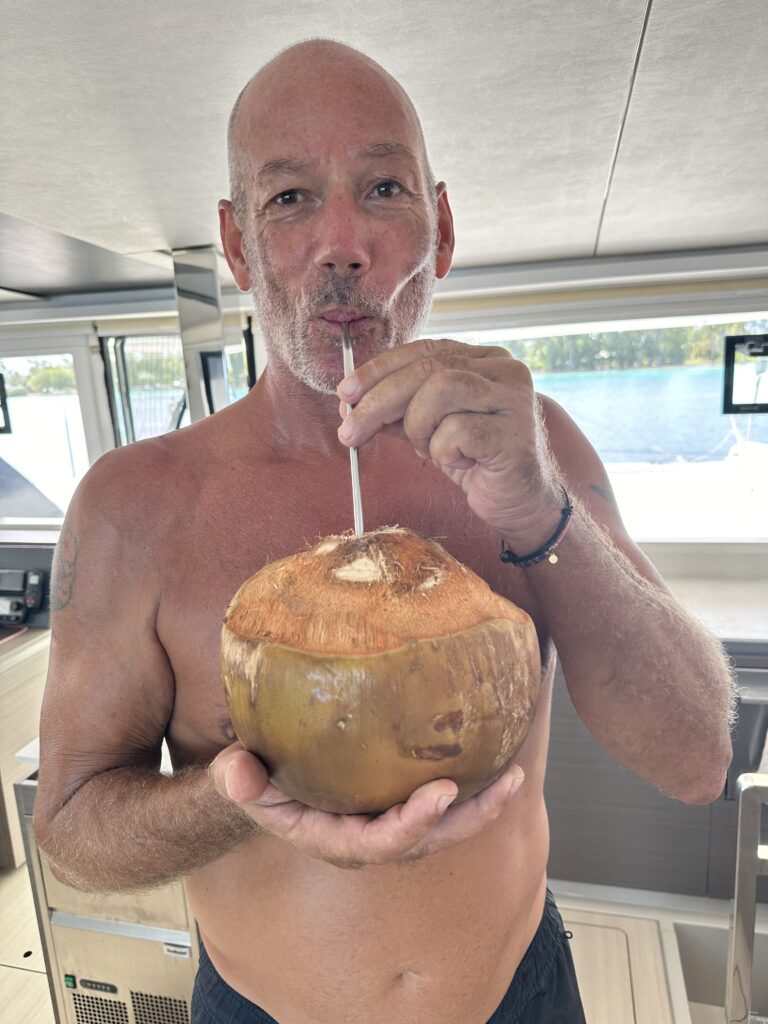
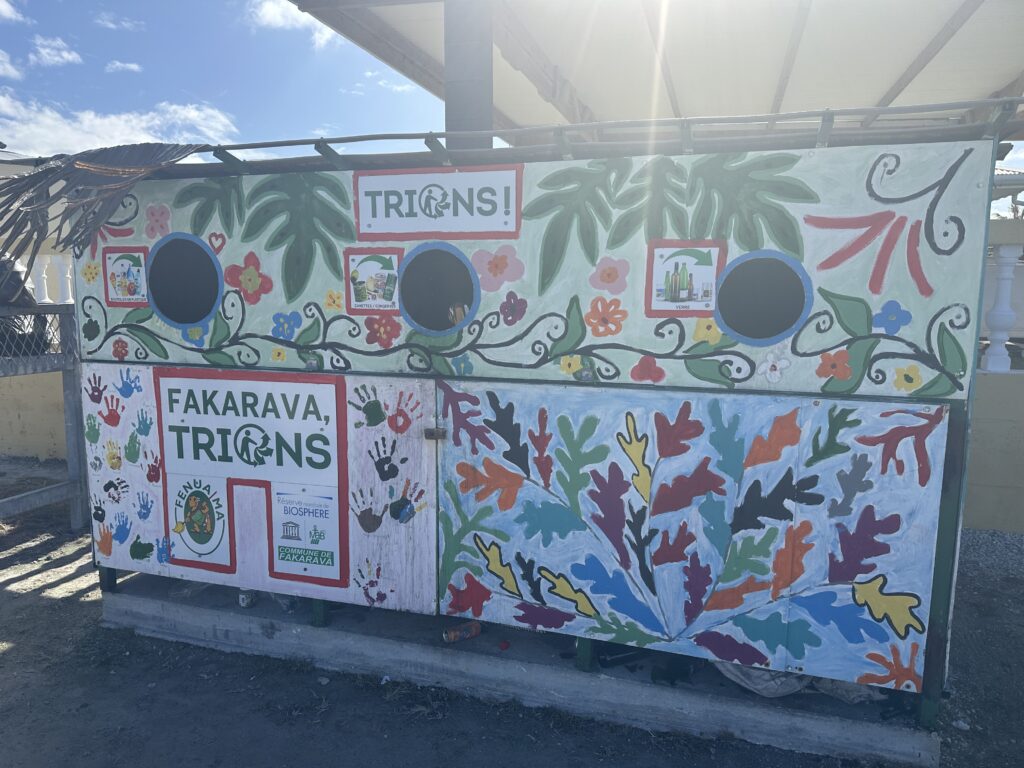
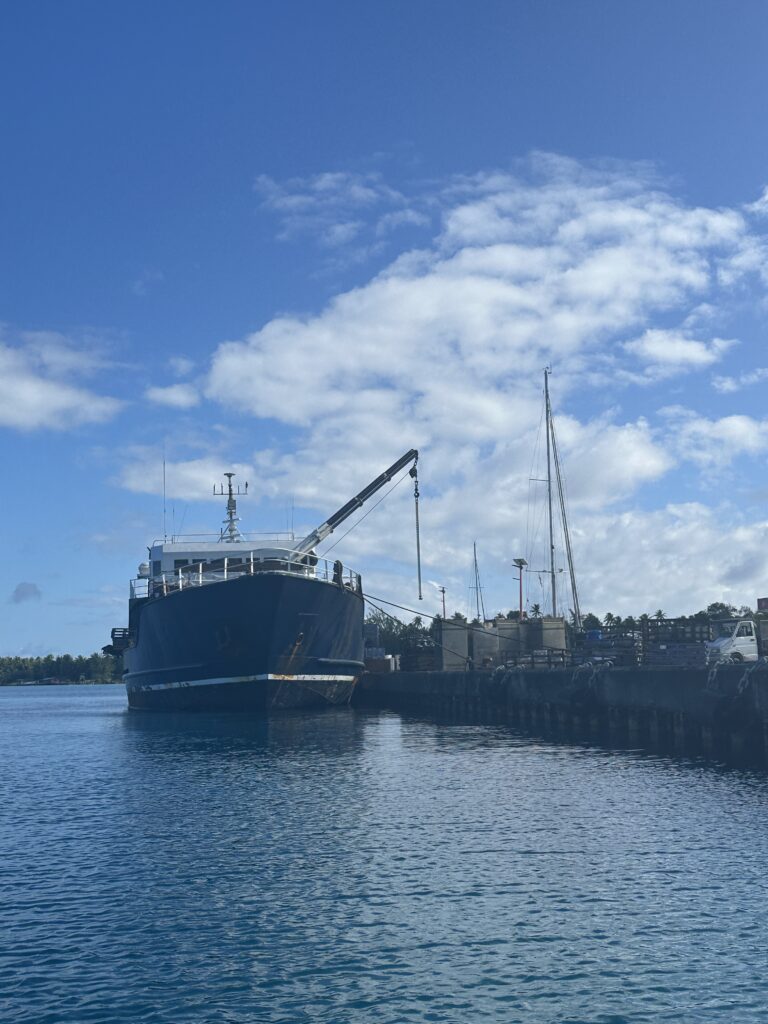
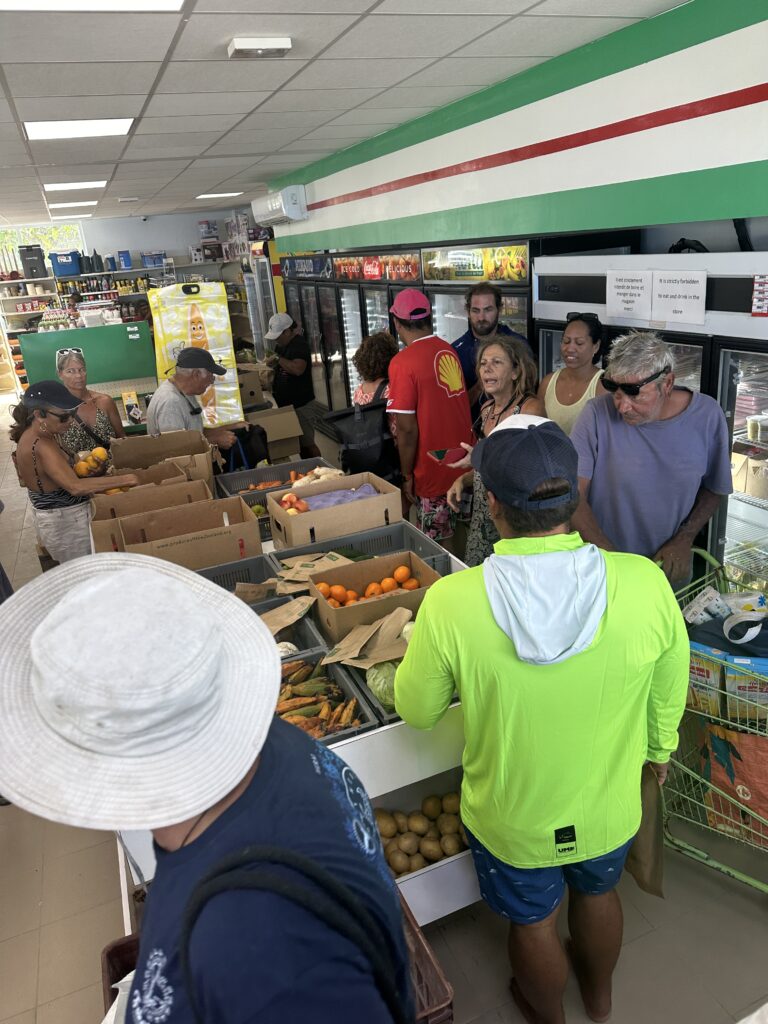
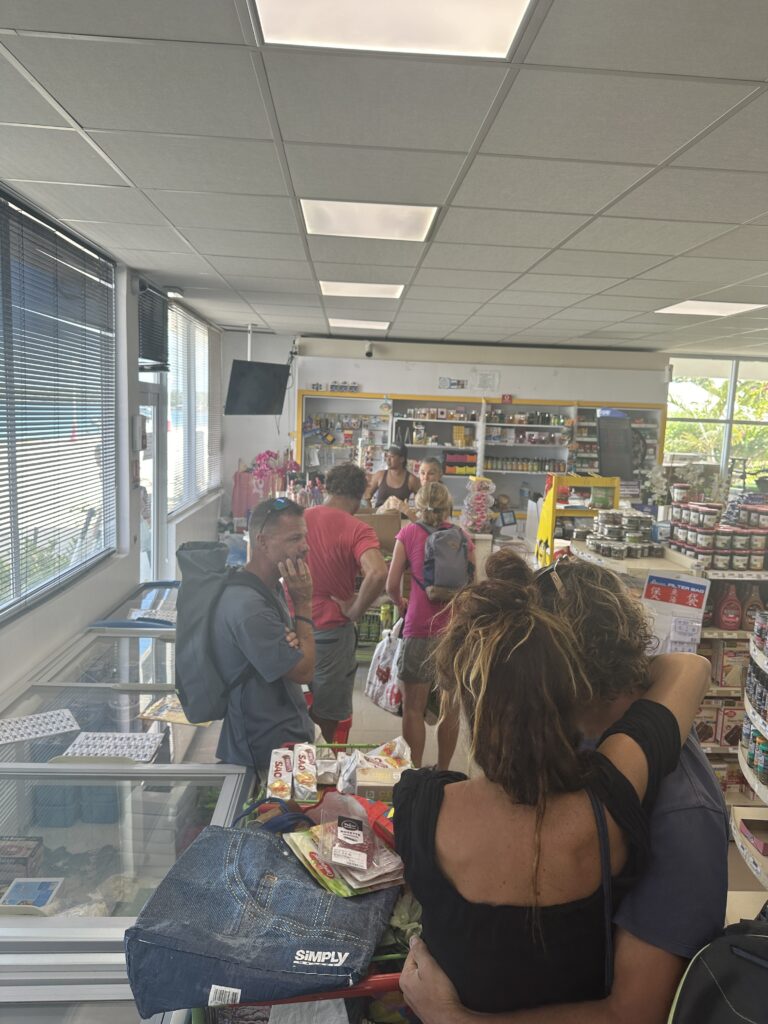
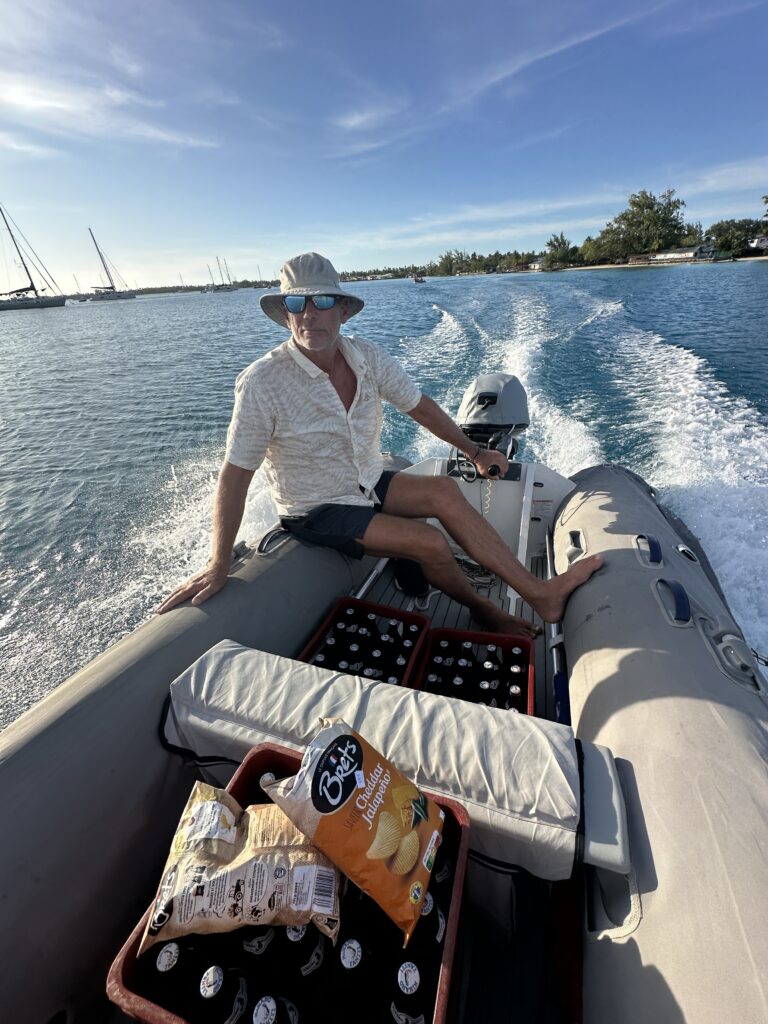
Pearl farming is popular in the Tuamotus, and they are famous for their black pearls. There is a showroom with a guided tour by a pearl farm located close to the village. So, one morning, off we went in our dinghy. We learned a lot from the tour, the most important being that each cultured pearl is inserted with a round, white object, which the shell produces a “crust” around.
Each shell goes through this process a maximum of five times, before they no longer can be used to produce pearls. Each time a larger “starter ball” is used, making the end product larger for each insertion.
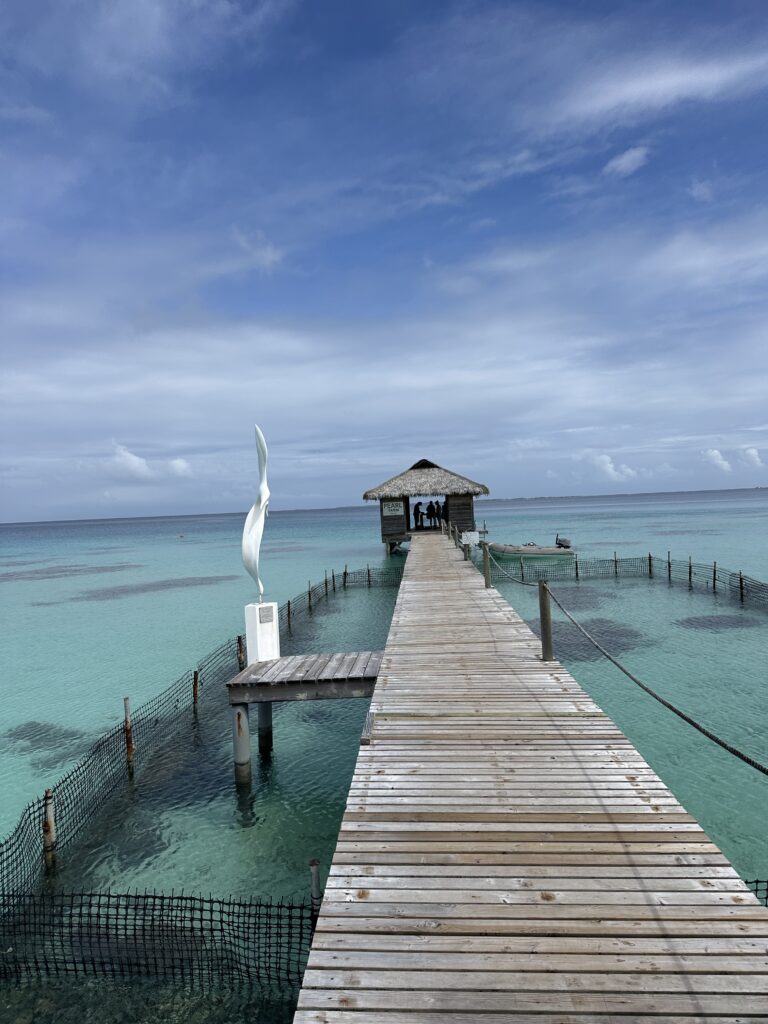
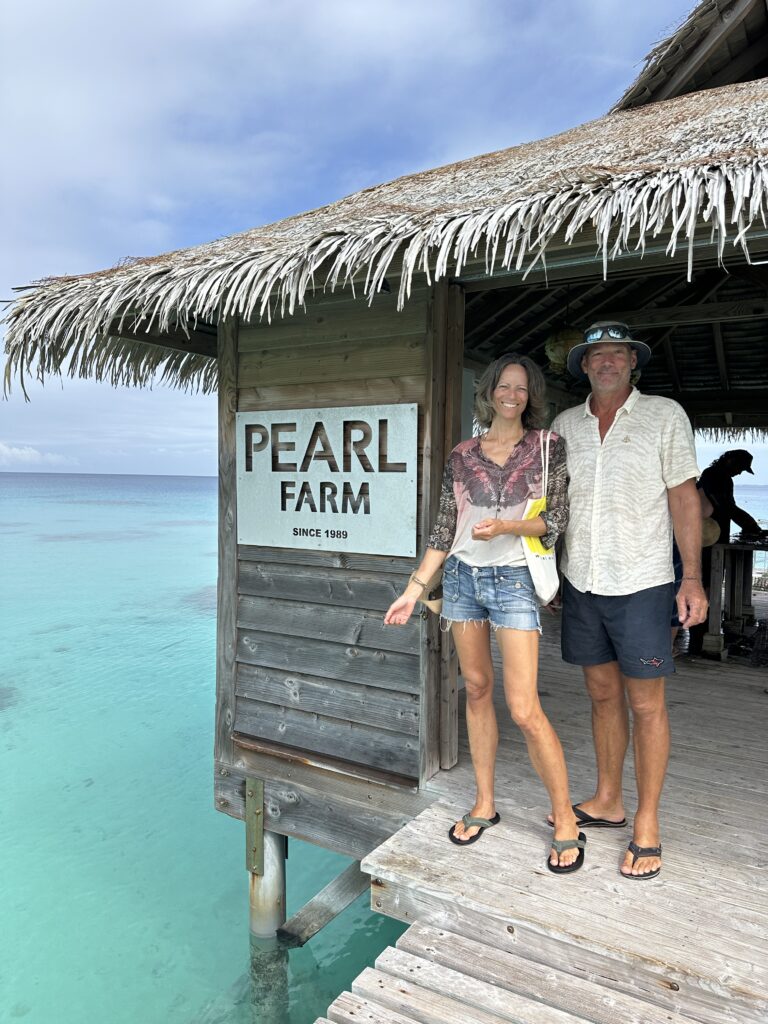
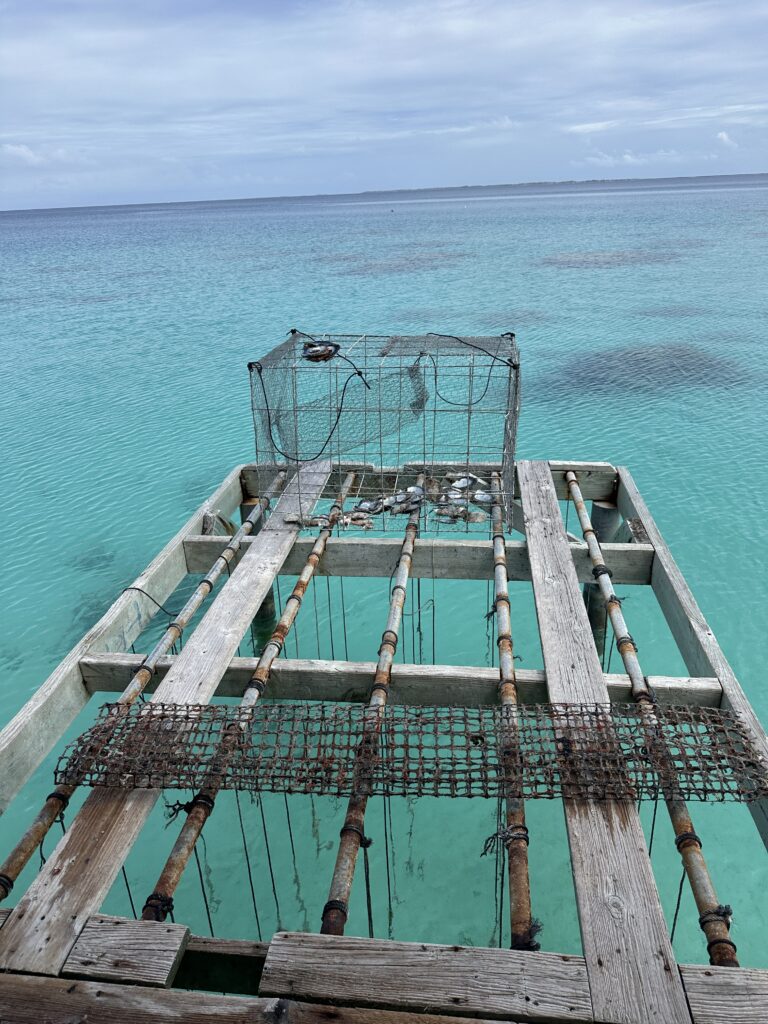
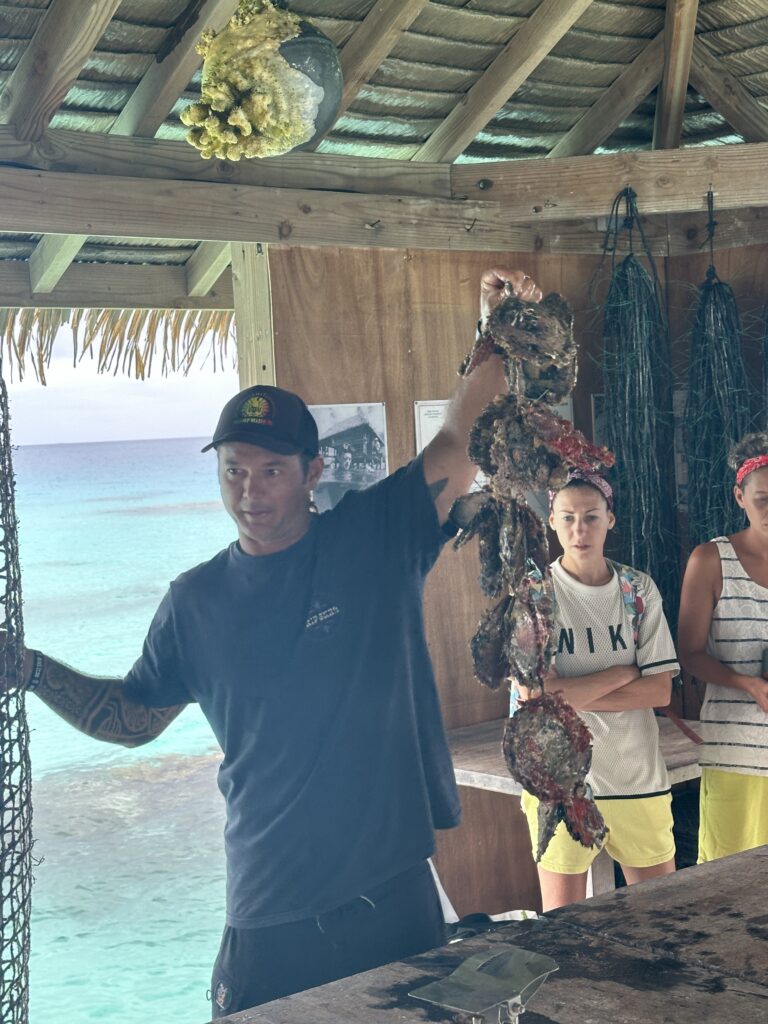
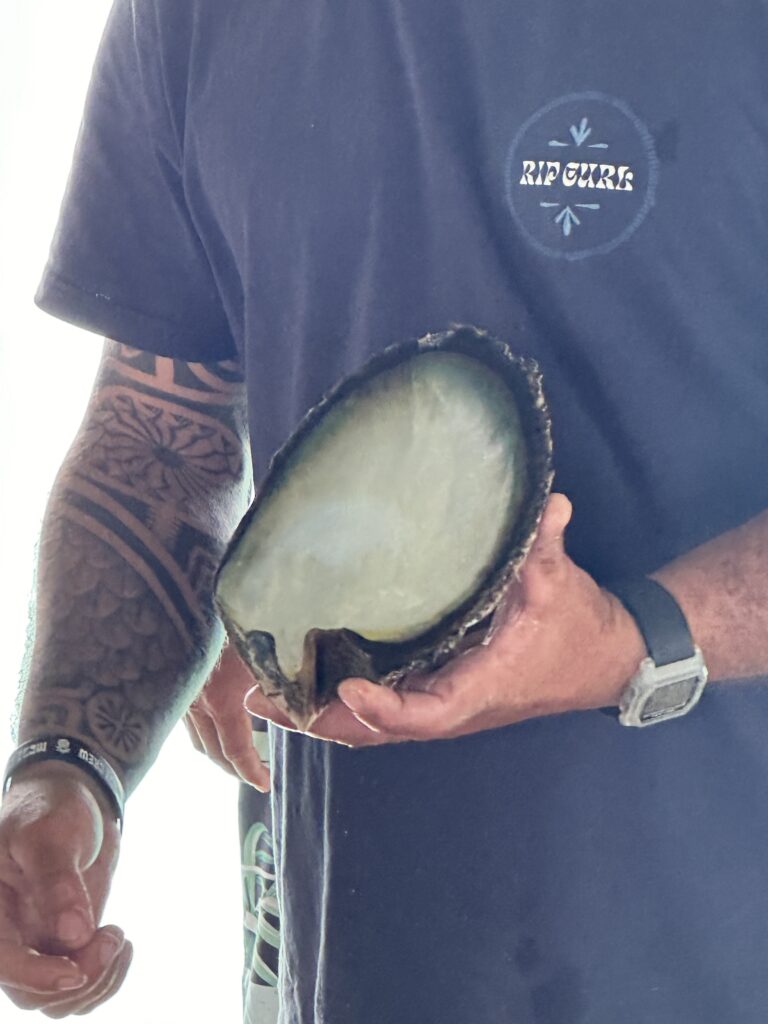
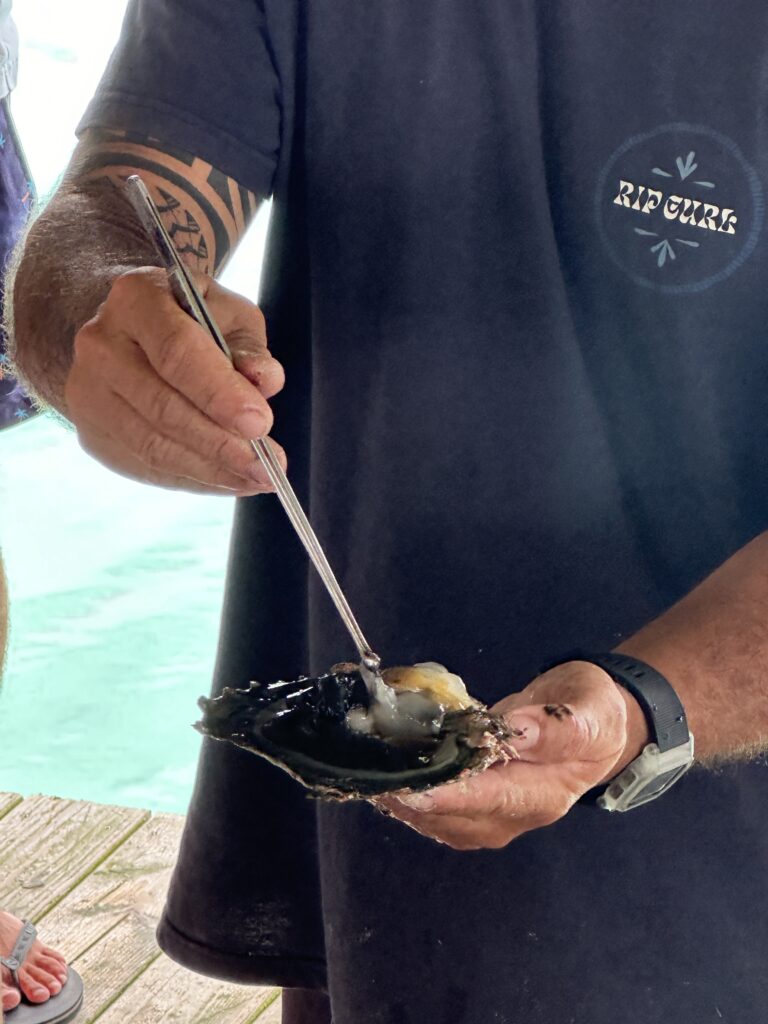
We participated in a pearl lottery, where you are guaranteed to win, but the surprise is the quality of the pearl you win. We were both very happy about our prizes, which were made into bracelets.
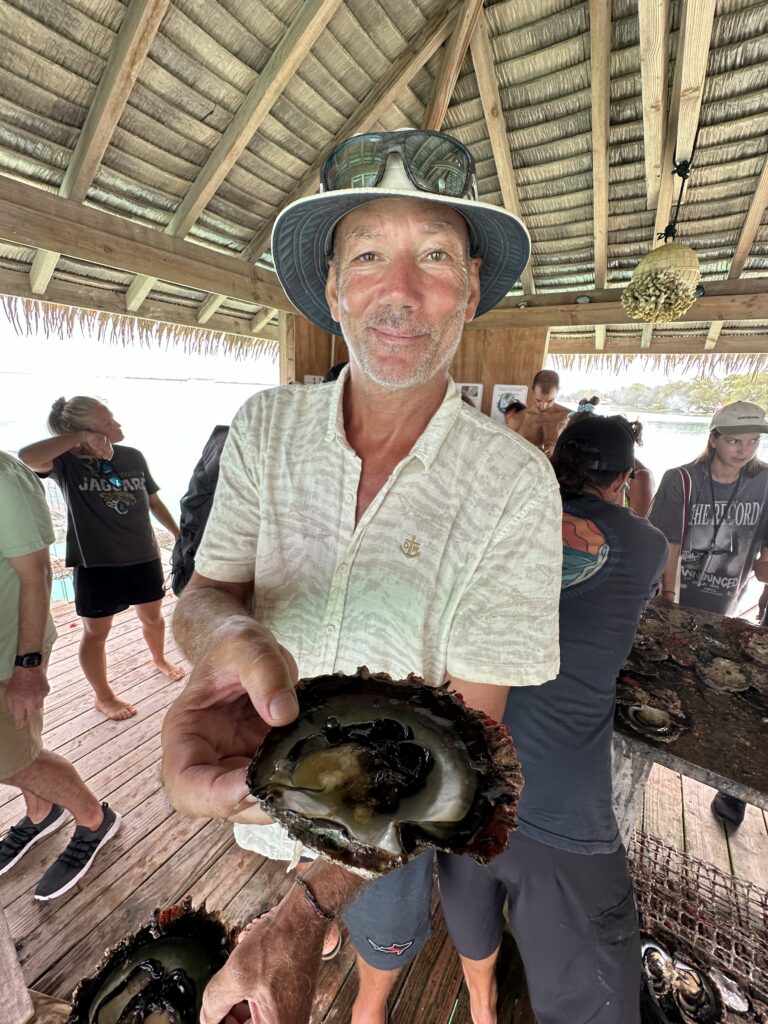
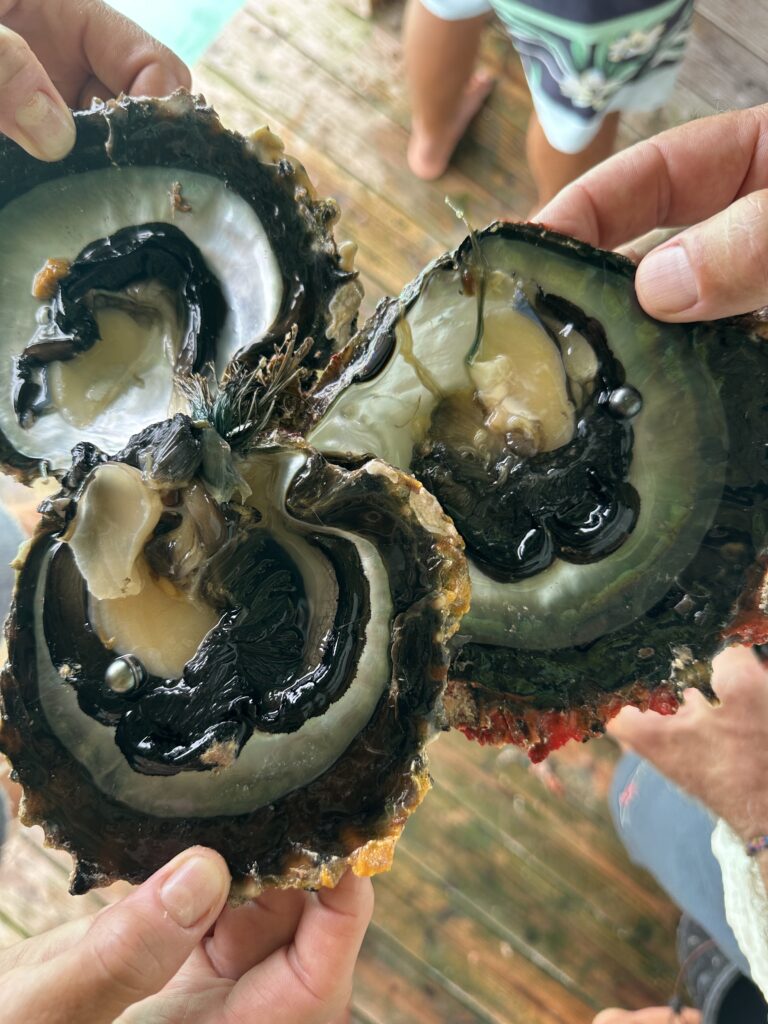
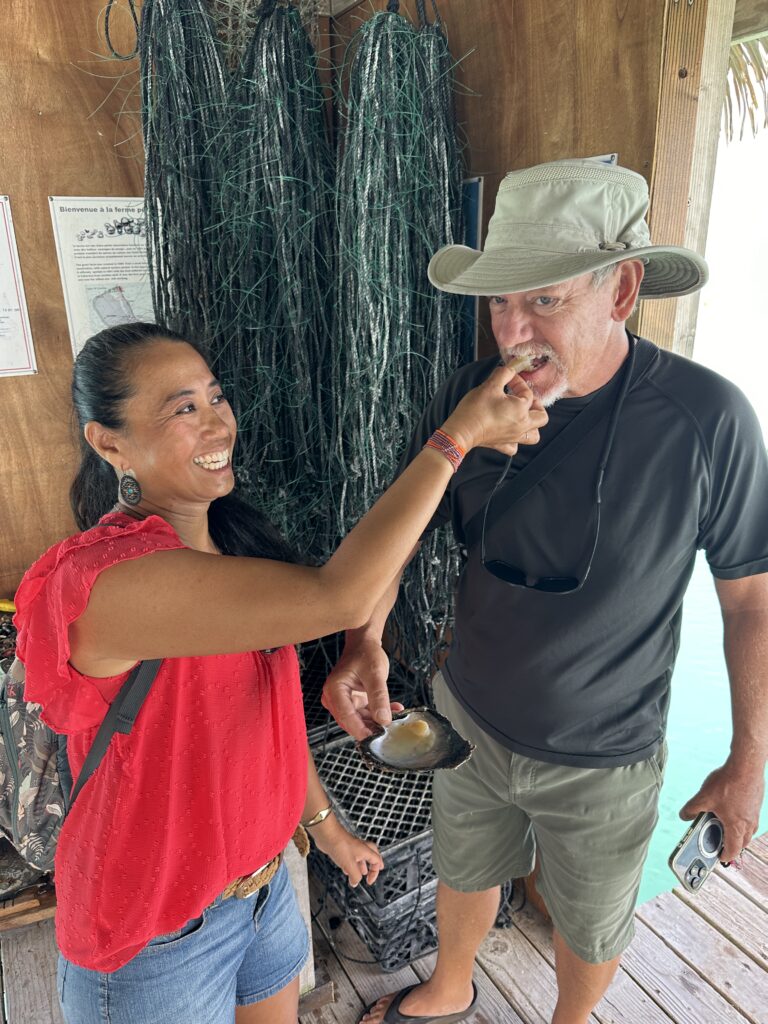
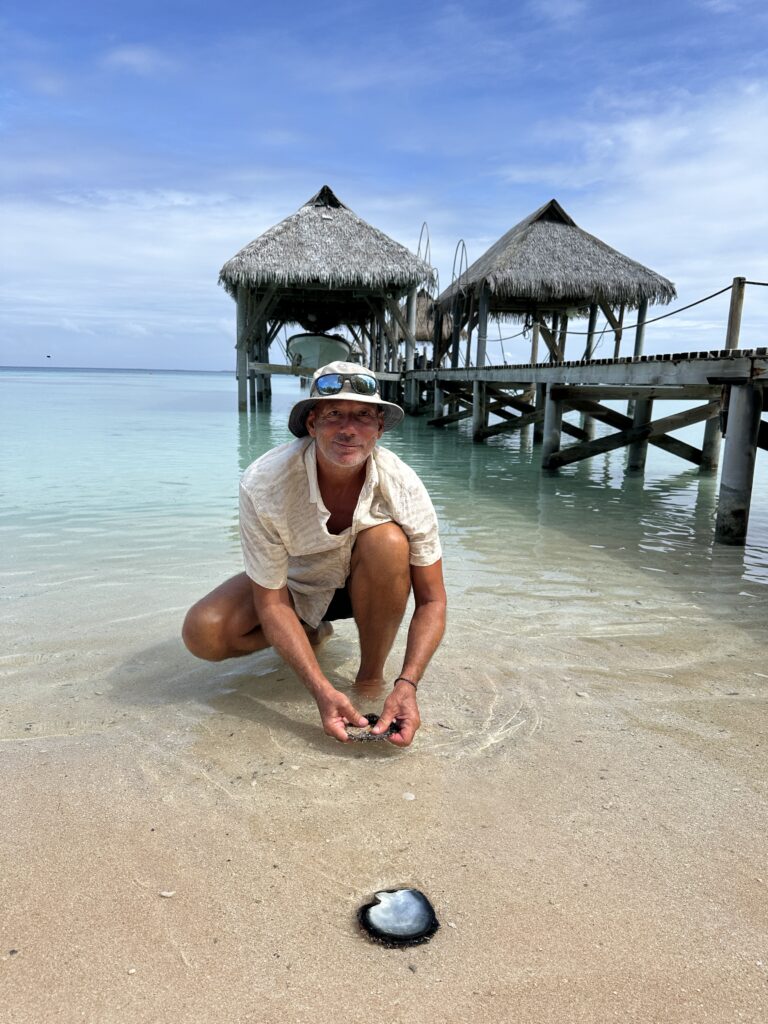
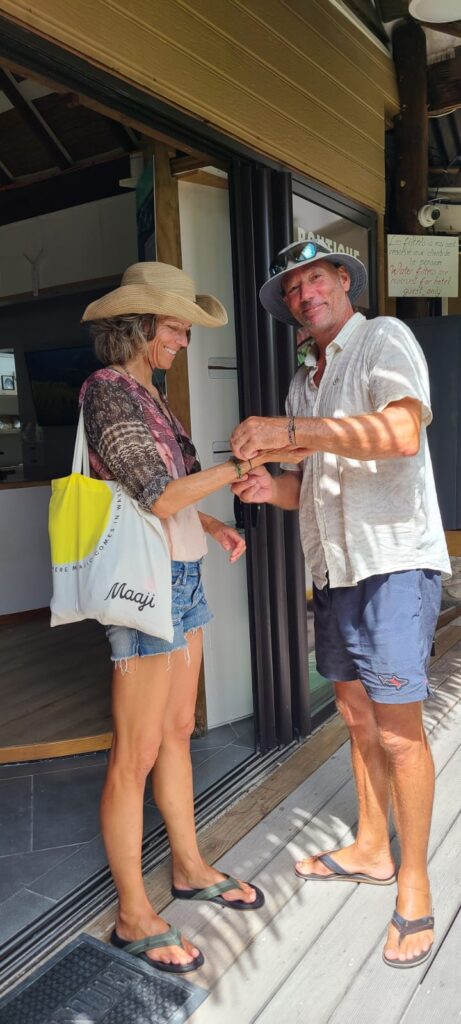
We ended the pearl farm visit having lunch at the neighboring resort, and pretended we were on holiday for a little while.
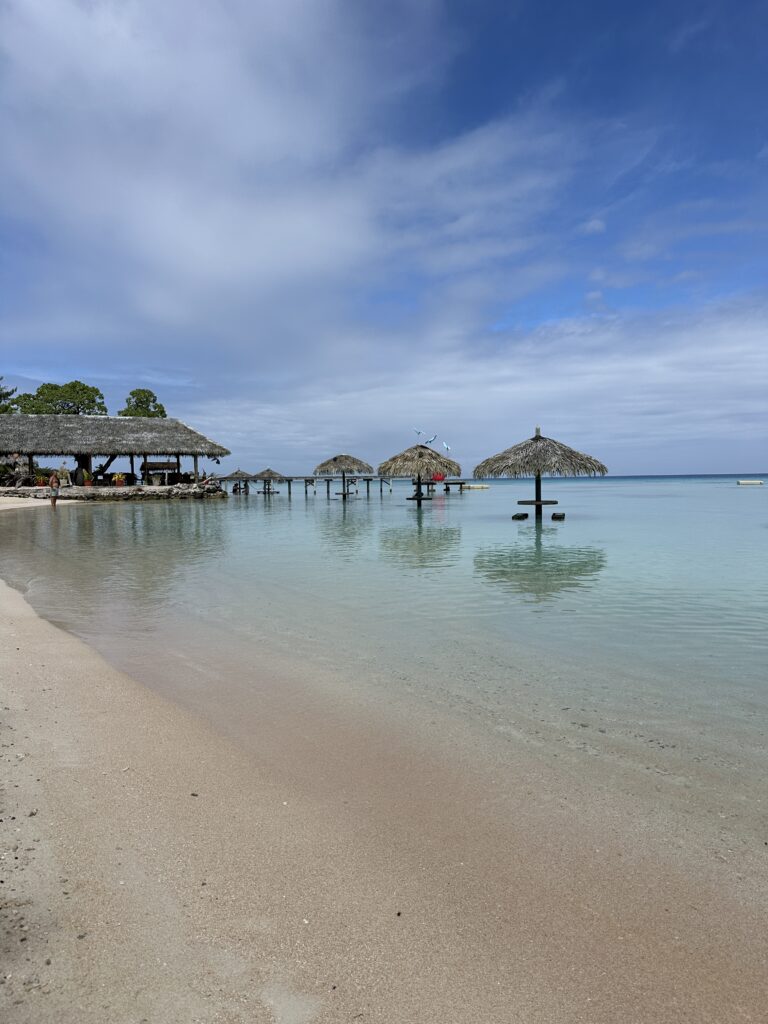
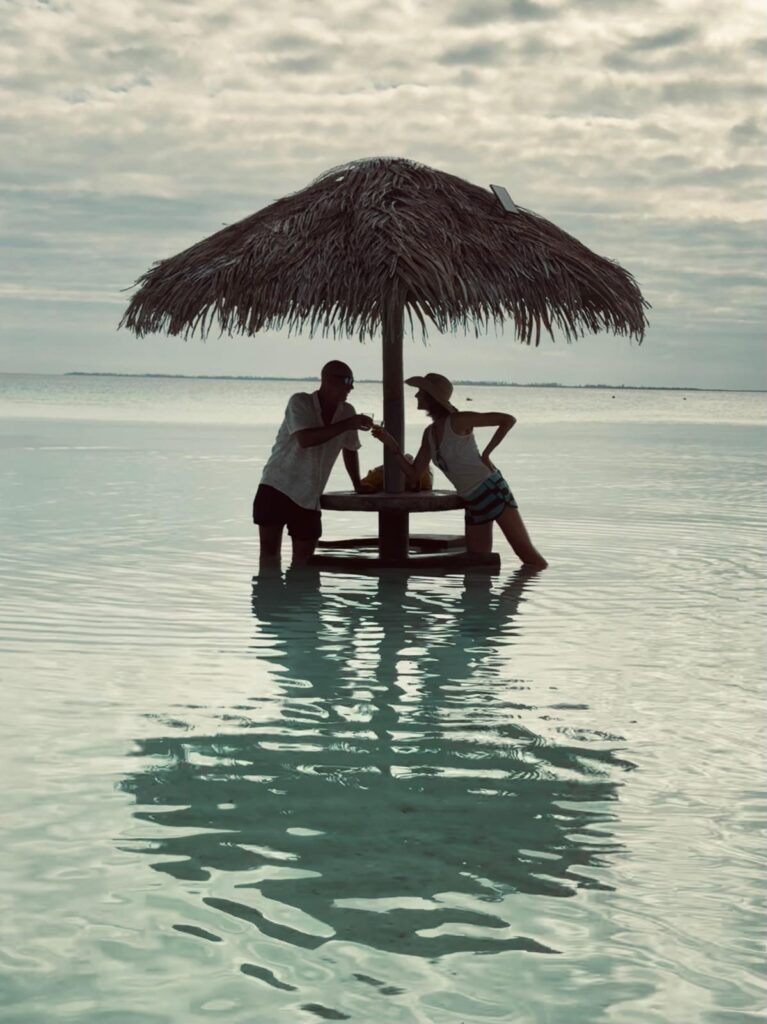
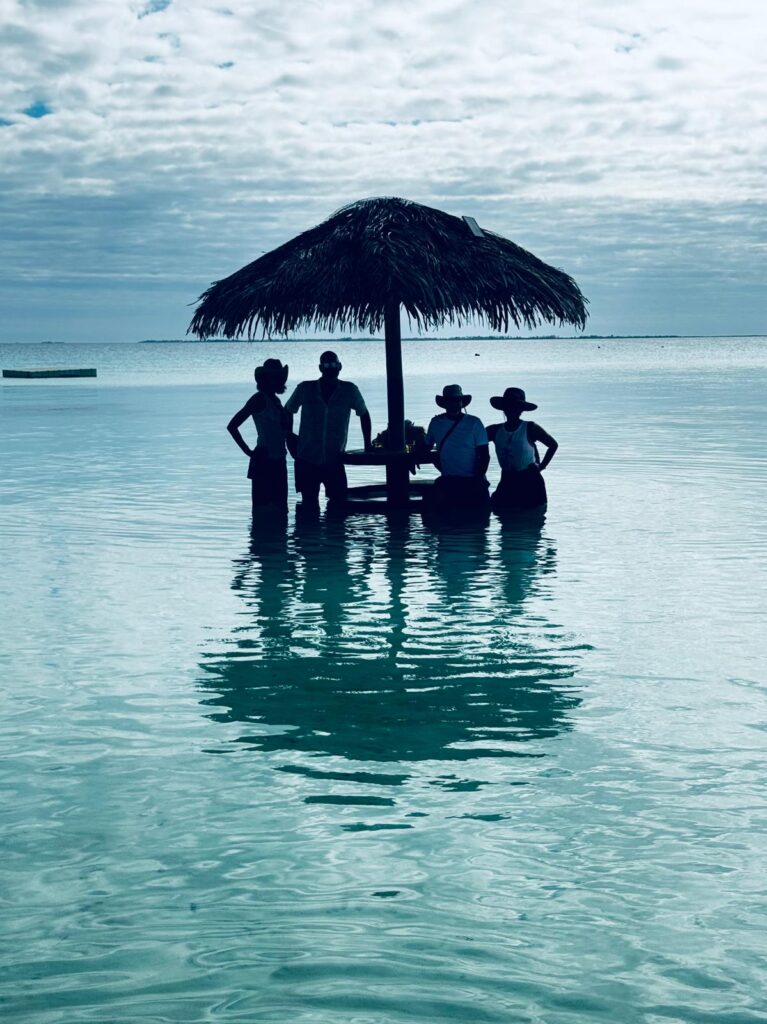
We also made a couple of other visits onshore while in Rotoava, and were excited to get a little taste of what this atoll is so famous for – its shark population. We were especially impressed by the local kids who seemed to treat nurse sharks as their pets. Pretty awesome how they had trained them to (rather) gently pick food from their hand…
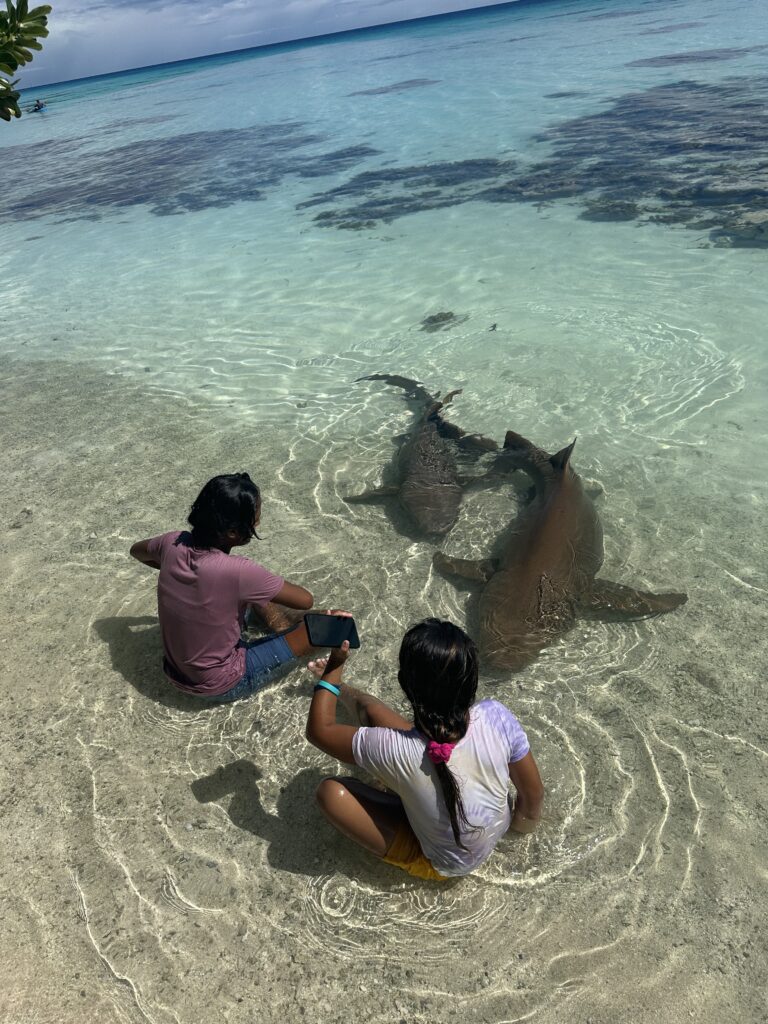
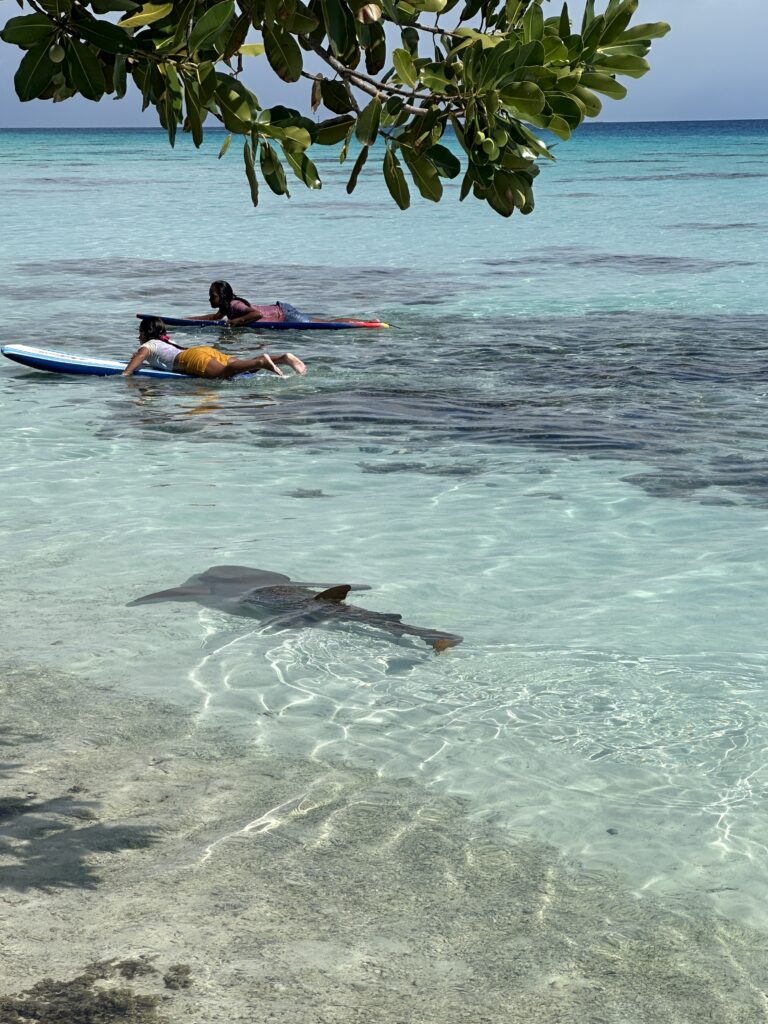
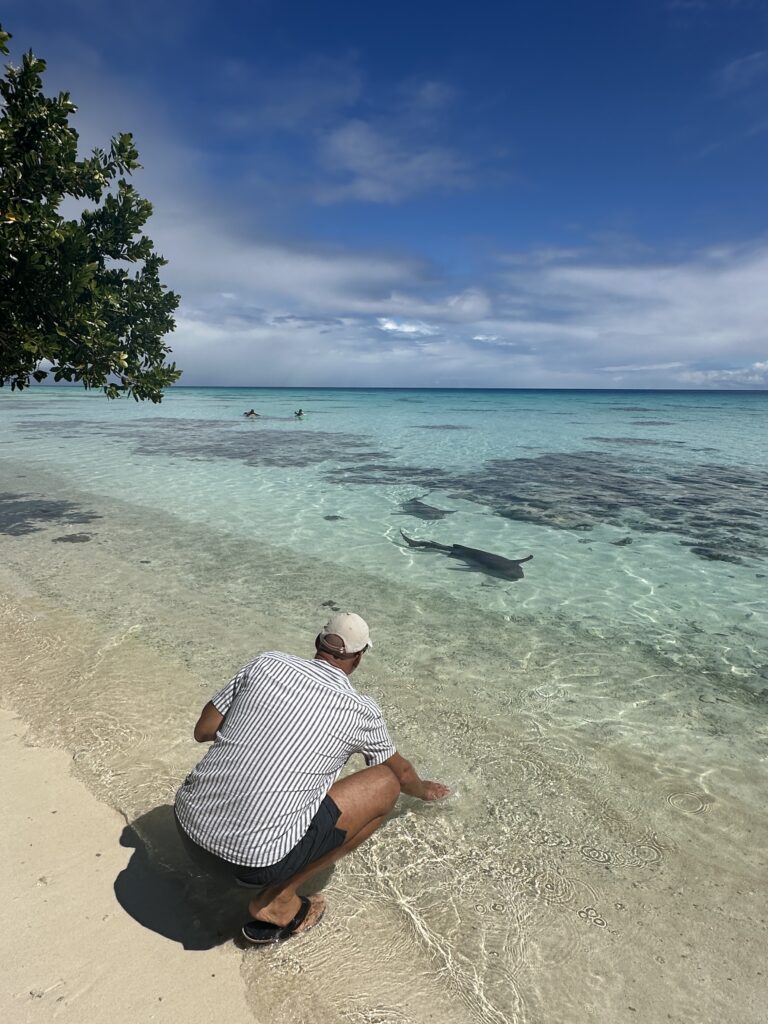
We ended our stay in Rotoava with a bike ride past the airport to the North pass where we sailed through into the lagoon just a few days earlier.
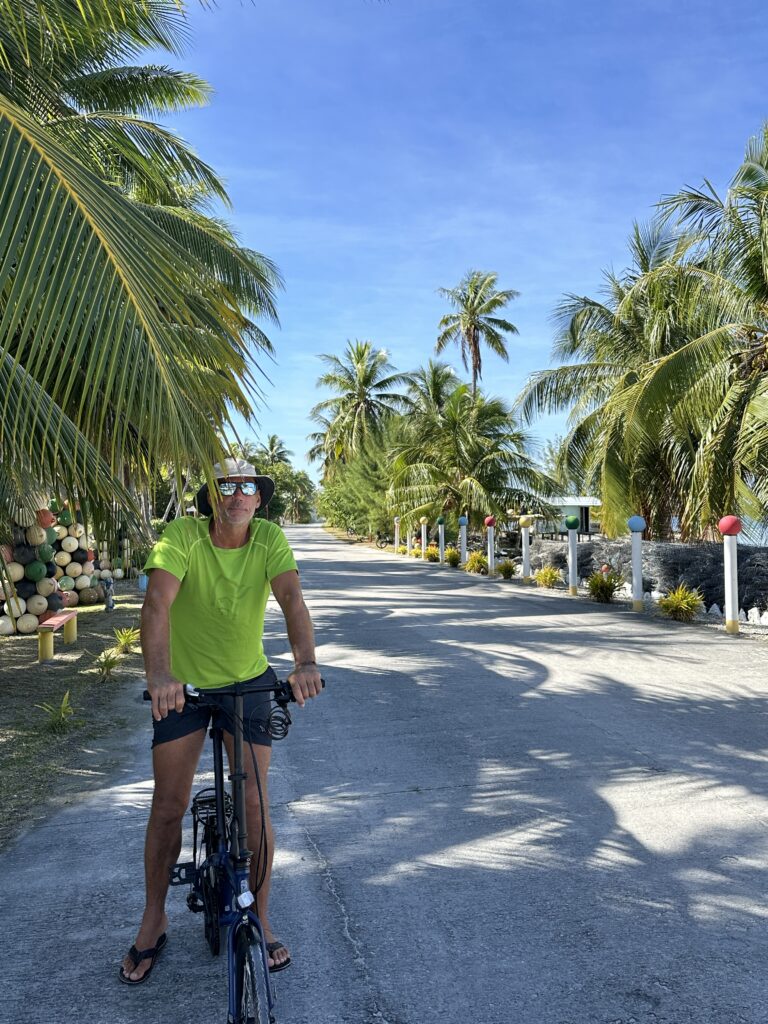
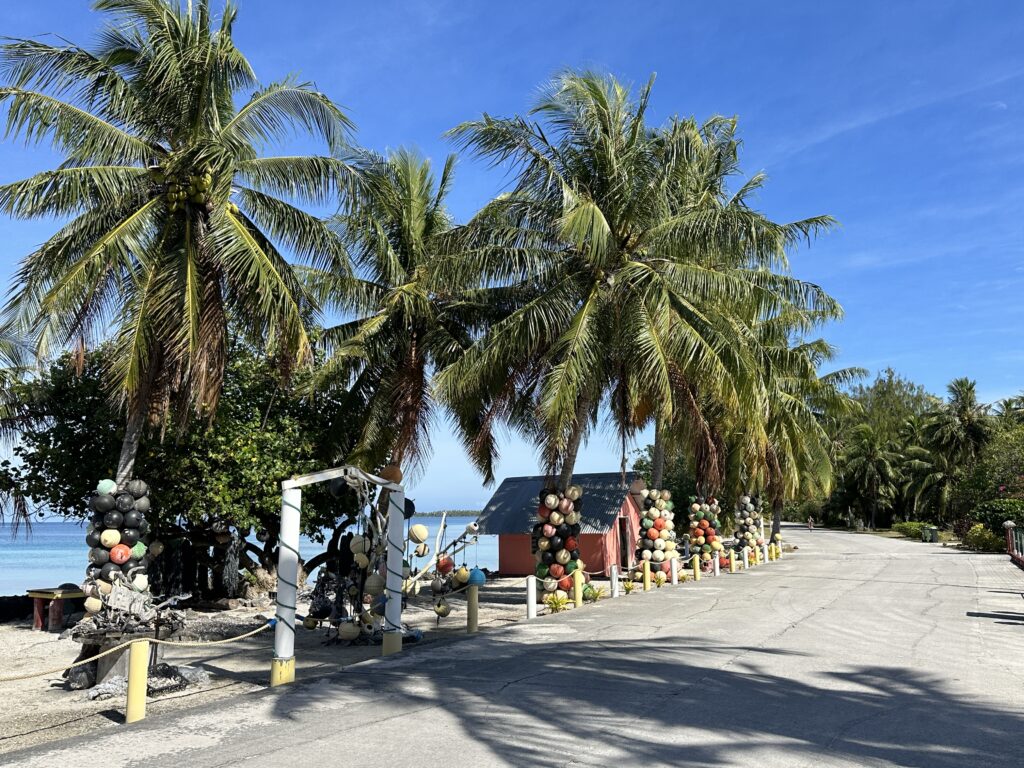

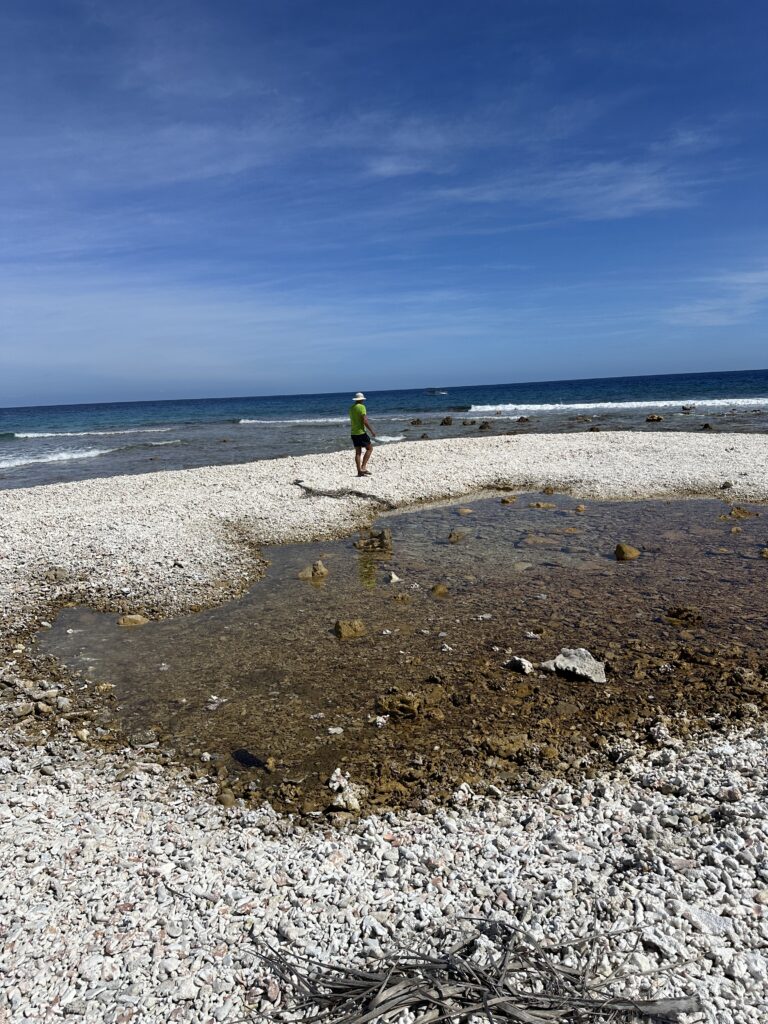
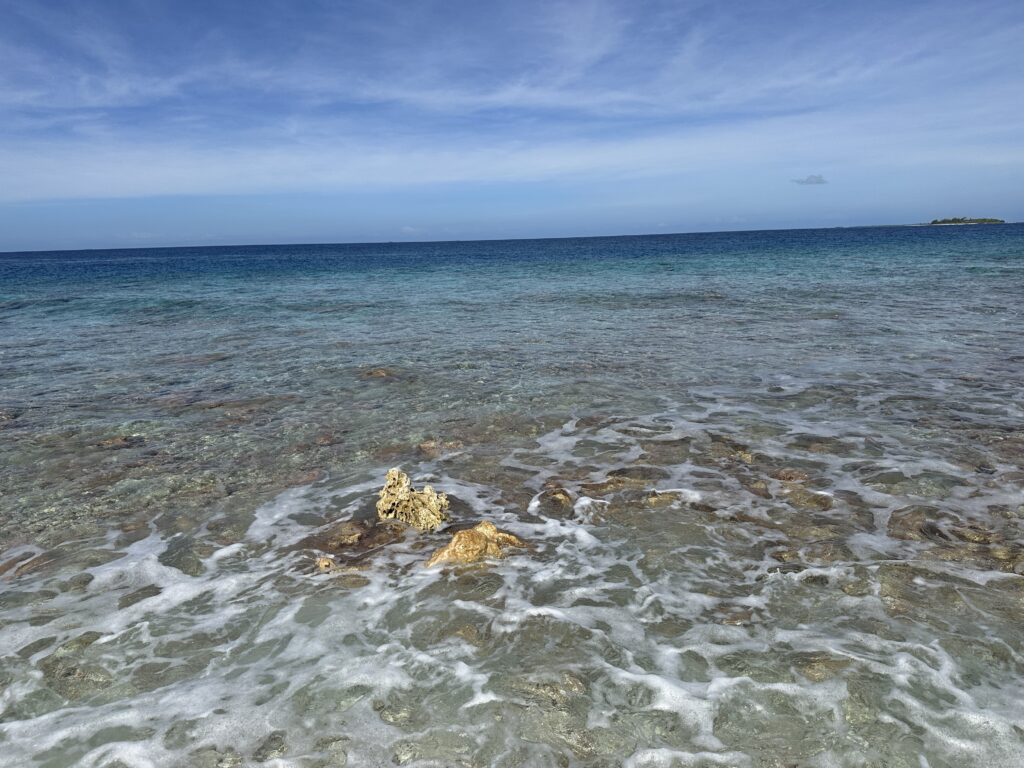
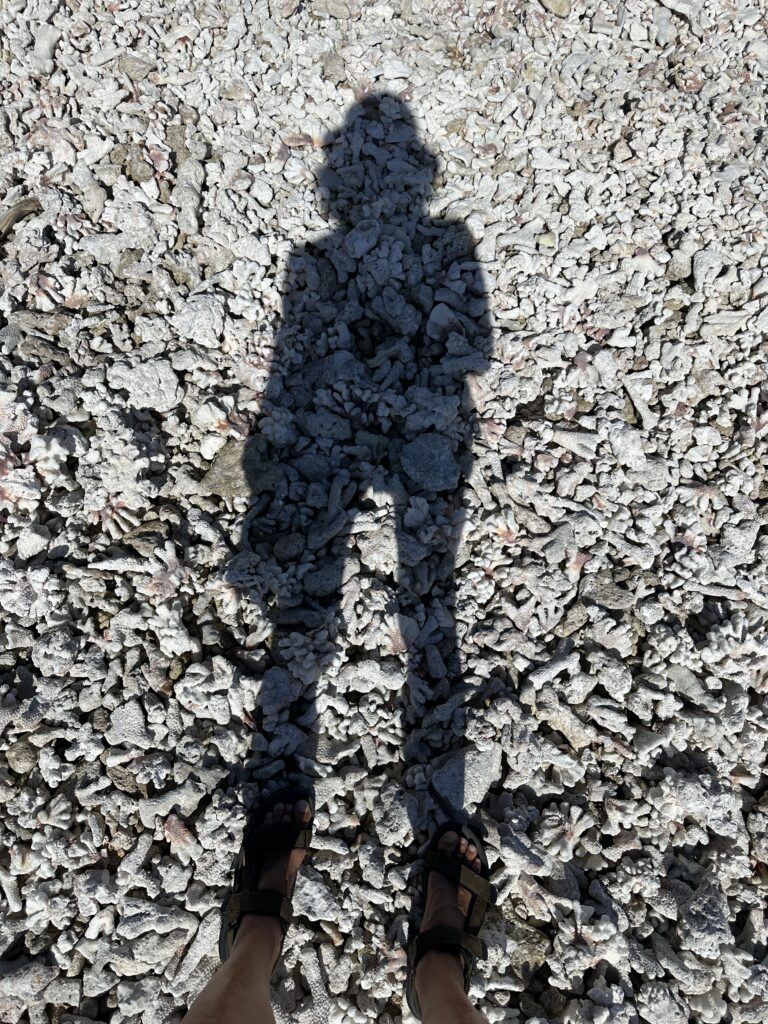
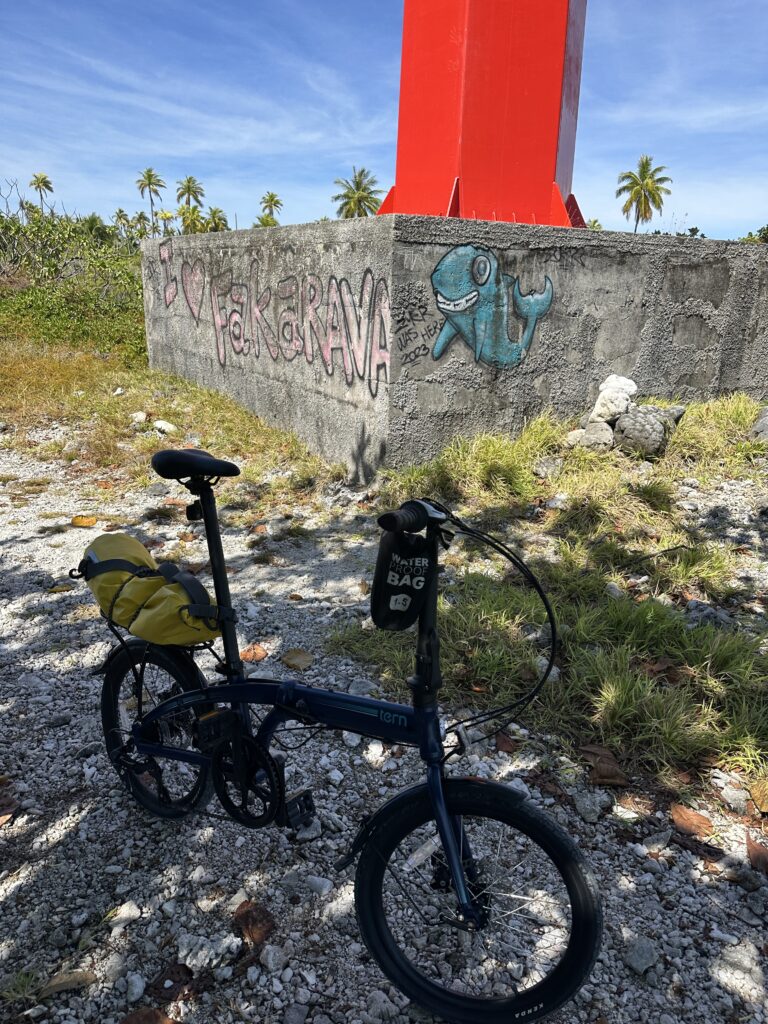
We are now sailing inside the atoll to the anchorage in the south east corner, Hirifa. There we plan to spend the upcoming “maramu”, which is a strong SE wind, typical in Polynesia this time of year.
Can’t wait to explore this awesome atoll further!
